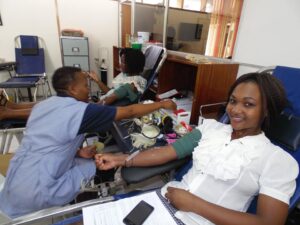According to the Global Asthma Report, asthma is a greater problem than had been previously thought. Lower income countries have unmet needs which should be addressed comprehensively.
It says asthma remains the most common non communicable disease in children and adolescents in Africa. Despite this, asthma remains largely undiagnosed and is associated with significant morbidity and mortality.
The number of people who have lost their lives due to asthma is the highest in primarily low and middle-income countries, like Zimbabwe, globally, according to the World Health Organization (WHO) statistics.
According to the data by WHO, it is estimated that there are at least 339 million asthma patients in the world, and this number is expected to reach 400 million in 2025.
In Zimbabwe, asthma is among the top 20 leading causes of death.
A study conducted in Zimbabwe’s Chitungwiza area, concluded that prior to scaling up asthma treatment programmes in the country, there is need to address individual-level, community-level and health service level barriers to health seeking among asthma patients.
World Asthma Day
Every first Tuesday of May, World Asthma Day (WAD) is commemorated to raise awareness of the disease worldwide. It is an initiative of the Global Initiative for Asthma, (GINA), a World Health Organization collaboration founded in 1993. The theme ‘Asthma Education Empowers’ was selected for WAD 2024, with the emphasis being on the need to empower people with asthma with the appropriate education to manage their disease. Here are some facts around asthma and WAD.
Overview
Asthma is a chronic lung disease that affects people of all ages. It is characterised by chronic airway inflammation, leading to intermittent symptoms of wheezing, dyspnea (shortness of breath), coughing and chest tightness in combination with variable expiratory airway obstruction.
Key Facts
Asthma is a major noncommunicable disease (NCD), affecting both adults and children.
It is the most common chronic disease among children.
An estimated 262 million people were affected by asthma in 2019 and it caused approximately 455 000 deaths.
Most asthma related deaths occur in low and lower middle income countries (LMIC) , where treatment and diagnosis is a challenge.
Symptoms
- Coughing, especially at night.
- Wheezing when exhaling and sometimes when inhaling.
- Chest tightness making it difficult to breathe deeply.
- Shortness of breath or difficulty breathing, sometimes even when resting.
Symptoms can worsen during an asthma attack which may be triggered by factors such as animal fur, strong scents, fumes, smoke, dust and pollen. People presenting with symptoms should see a health provider.
Causes
Asthma can run in families, with a higher likelihood if other family members have the condition. Environmental factors and allergens can also trigger asthma symptoms.
Management
Inhaled medication such as Salbutamol inhalers can help control asthma symptoms and allow individuals to lead a normal active life. Avoiding known triggers is crucial in reducing asthma symptoms.
Proper diagnosis and treatment are essential, especially in regions where under diagnosis and under treatment are common challenges.
Impact
Under treated asthma can lead to sleep pattern disturbance, tiredness during the day and poor concentration levels.
Severe symptoms may require emergency health care and hospitalisation and in some cases, even death.
The disease can have a significant financial impact on families and communities due to missed school days for children and work days for adults.
Prevention and Control
There is no cure for it but it can be managed with proper treatment. Education on managing asthma and understanding triggers is vital.
WHO and other health organizations are working to improve asthma care globally
For more detailed information and guidance, it’s best to consult healthcare professionals and refer to resources provided by organisations like the World Health Organization (WHO) and the Centers for Disease Control and Prevention (CDC).











